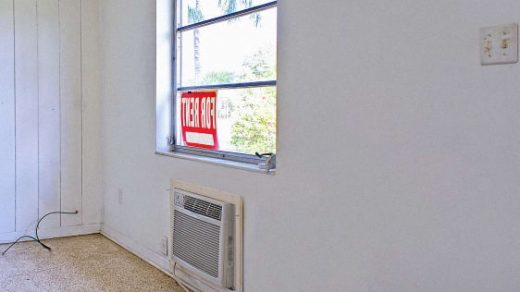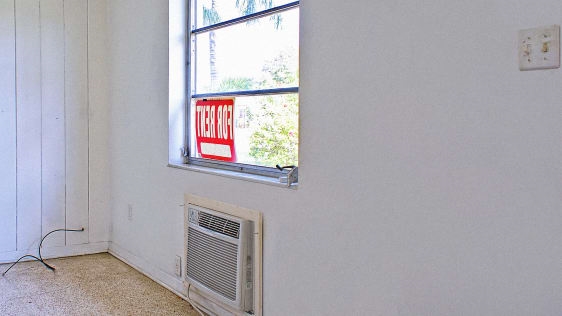There Are Simply Not Enough Places For Low-Income Americans To Live
If you care about rising income inequality, you should care about housing affordability. What people pay in rent as a percentage of their incomes has a lot to do with whether they can invest in other parts of their lives, including education and training that allows them to move up the economic ladder. The bad news: housing is becoming generally less affordable for low-earners. About 15 million American households are expected to be forced to spend at least half their income on rent by 2025.
A new report from the National Low Income Housing Coalition (NLIHC) gives a sense of the current problems faced by people at or near the poverty line (about $25,000 for a family of four). It finds that there is a shortfall of 7.2 million affordable homes for that income group (defined as “extremely low income” or ELI) if one expects people to spend no more than 30% of their pay on housing (the traditional standard of affordability).
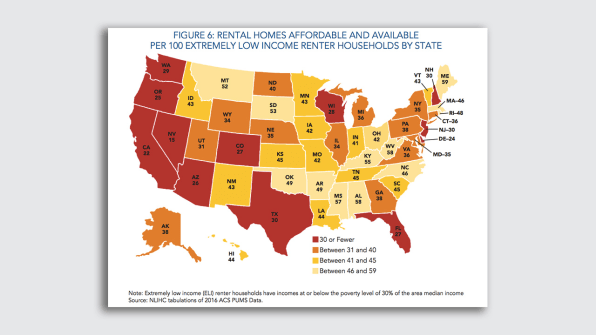
Across the U.S., there are only 35 affordable units for every 100 ELI renters. Almost three-quarters of ELIs are therefore already spending at least 50% of their income on housing. The map above shows where the problem is worst: California, which has the most unaffordable places in the country, has just 22 affordable units for every 100 ELIs. Nevada has just 15.
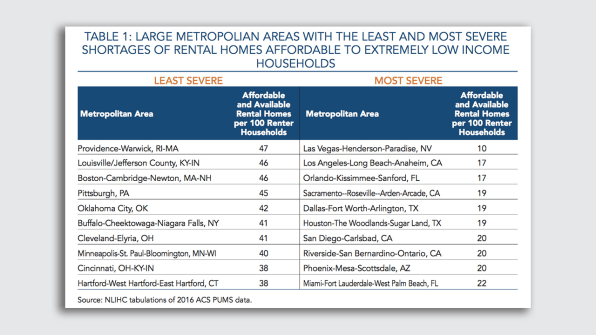
Part of the problem for ELIs appears to be a spillover effect from housing shortages and unaffordability in other strata of the housing market: There are 7.5 million homes that are available at prices affordable to ELIs, but 3.5 million of them are now occupied by higher income households.
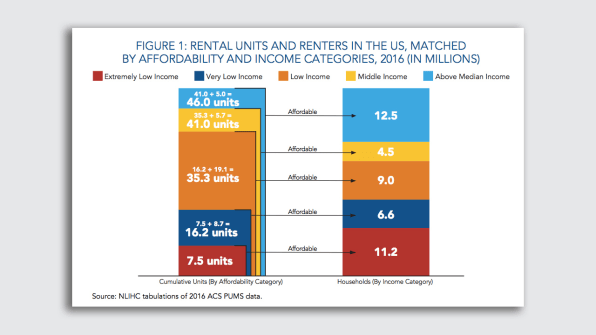
The federal housing policies that allow this shortfall to exist also contribute to income inequality. The government spends far more money on middle-class homeowners through tax breaks like the mortgage tax credit (worth $70 billion in 2013) than housing policies for low-income people.
A large share of the latter goes to elderly and disabled households, and now Republicans are talking about work requirements for “able-bodied individuals” in Section 8 rental units. Diane Yentel, NLIHC’s president and CEO, says these rules will create “cumbersome monitoring and enforcement systems for a very narrow segment of rental assistance recipients” and will be “neither cost-effective, nor a solution to the very real issue of poverty impacting millions of families living in subsidized homes, or the many millions more in need.”
Meanwhile, last year’s tax law reduced the value of the low-income housing tax credit, which incentivizes developers to build homes for already under-served groups. The NLIHC wants the government to expand programs like Housing Choice Vouchers, which pays for private market housing after low earners have contributed the first 30% of their income.
The best solution, however, would be better jobs for working people. An average, modest one-bedroom apartment requires an hourly wage of at least $17.14, the NLIHC says, well above even the best minimum wages in the country ($12.50 an hour in Washington D.C). “The problem is not that low-income people aren’t working hard enough,” says Yentel. “The problem is that many jobs do not pay enough for low-income people to afford the rent.”
(20)

